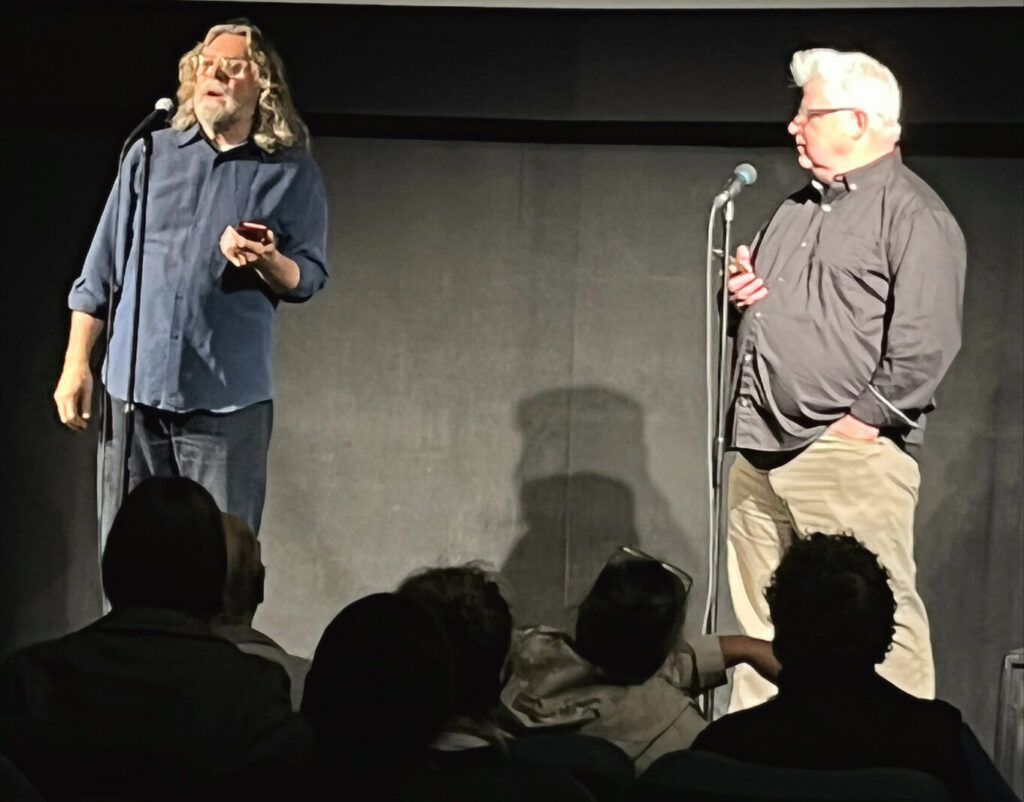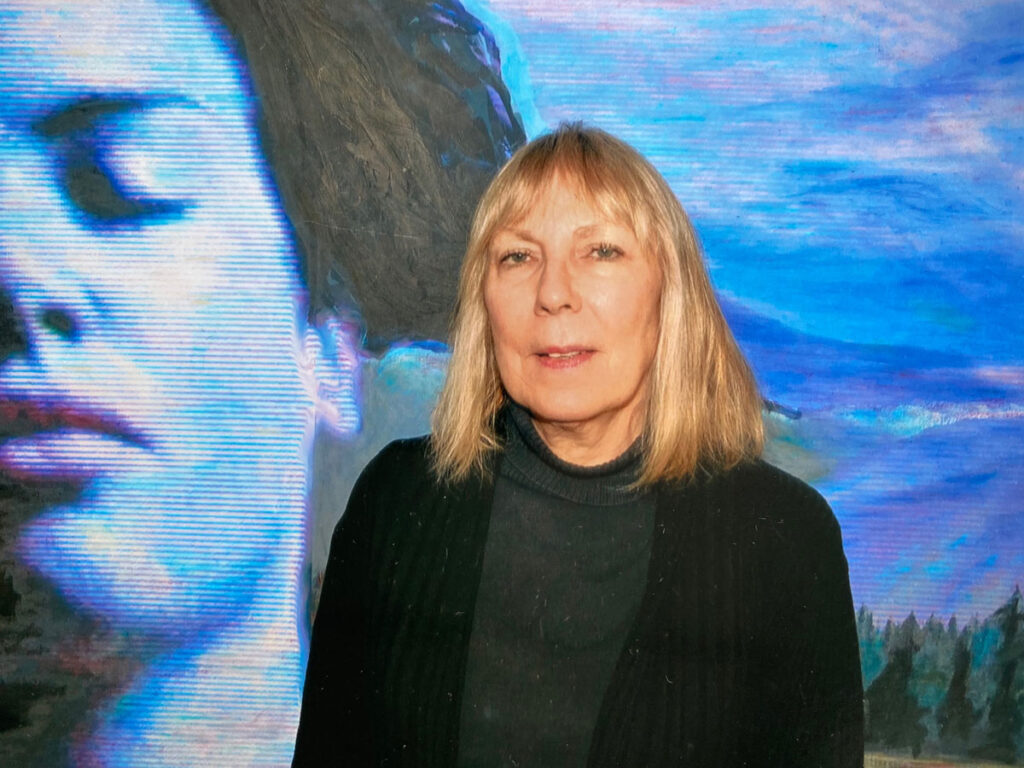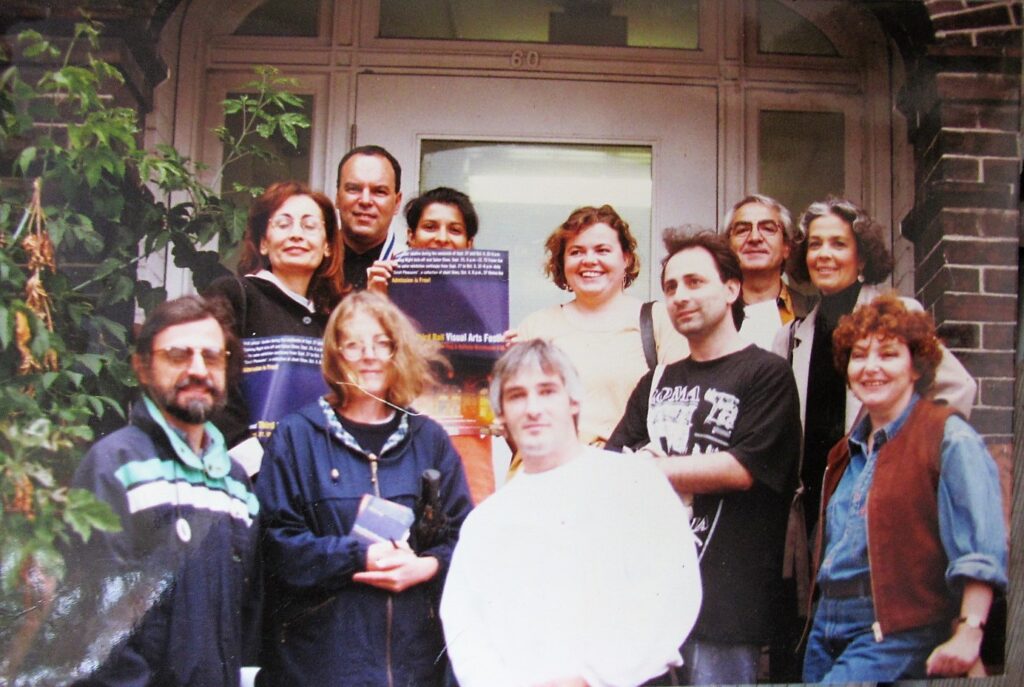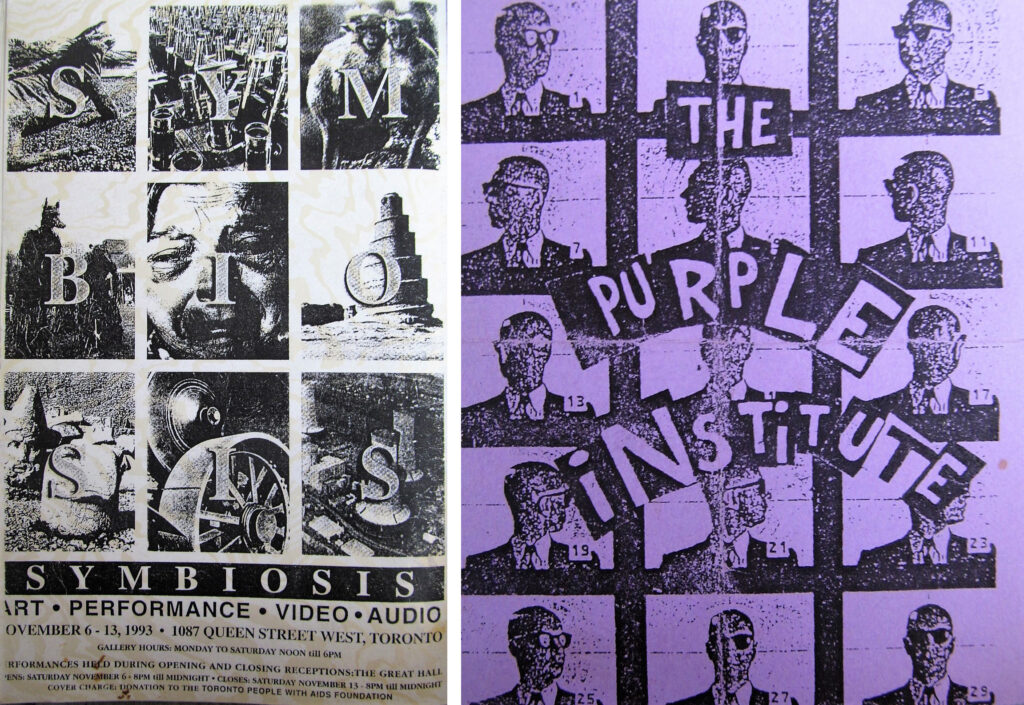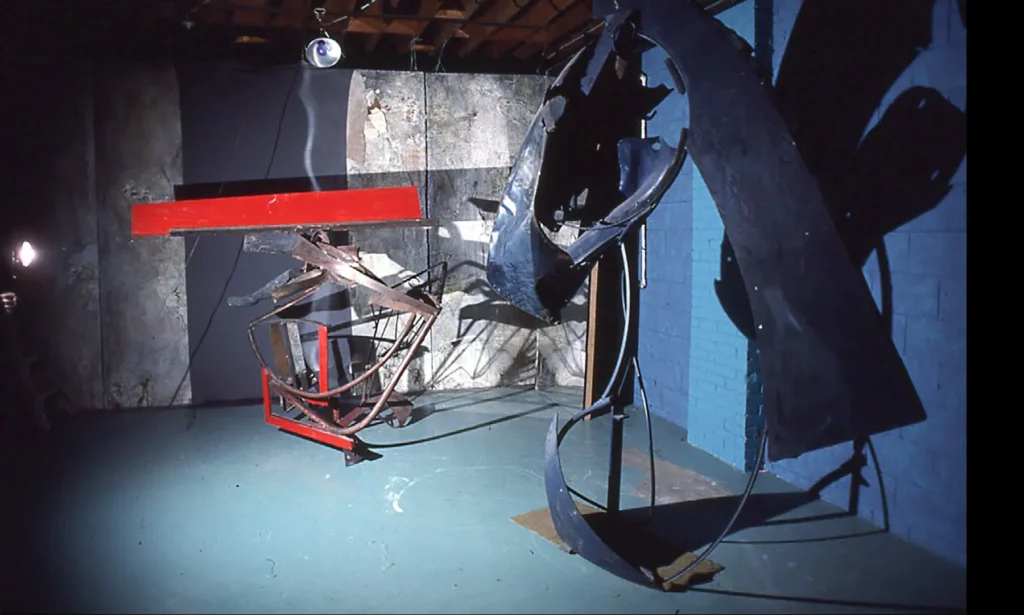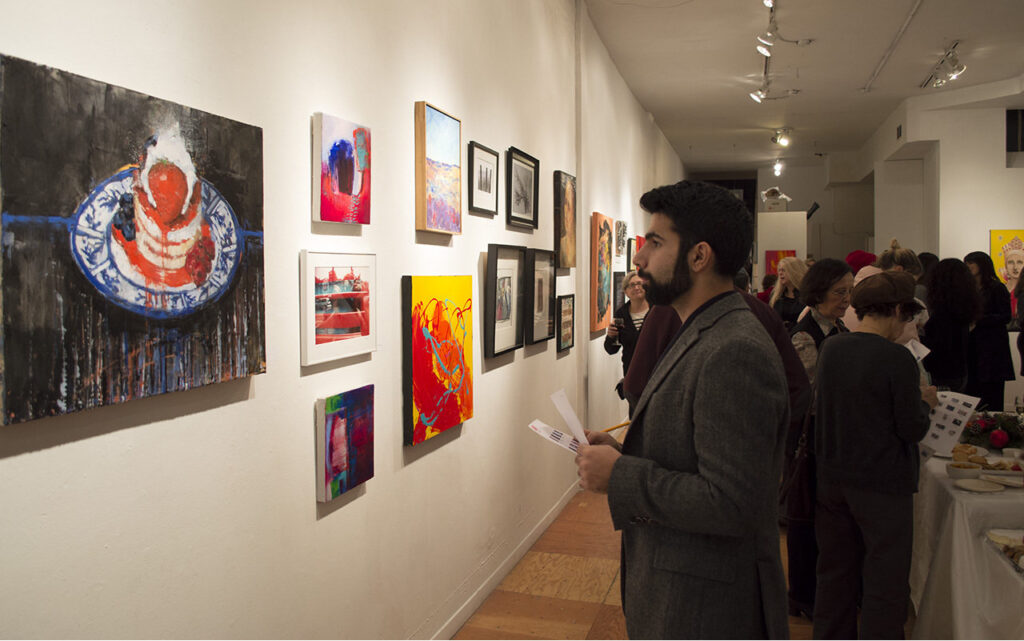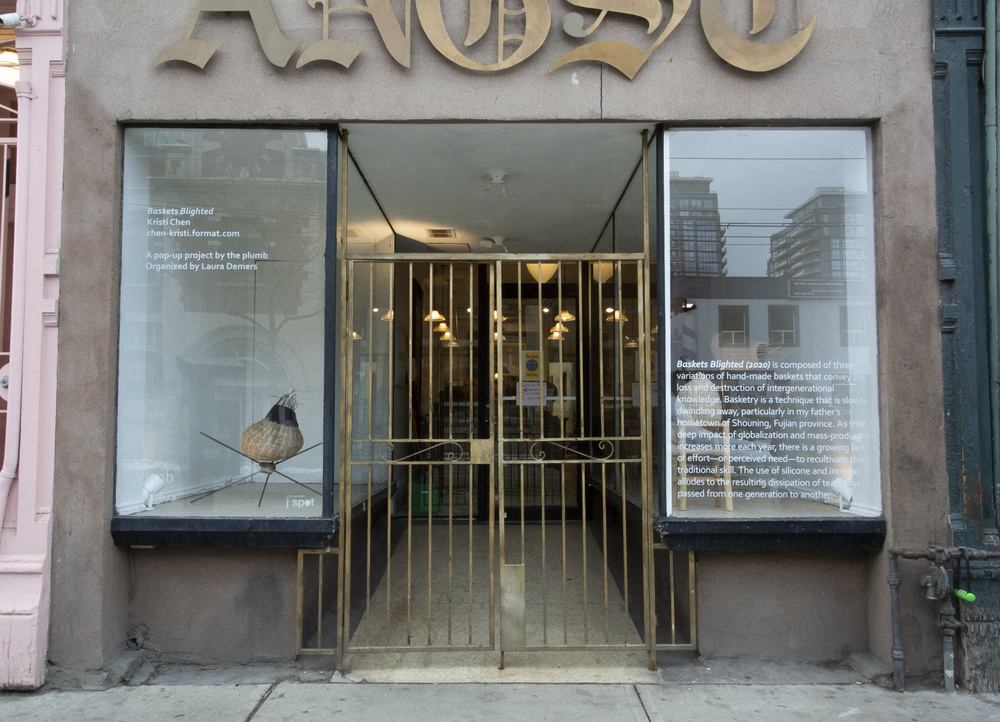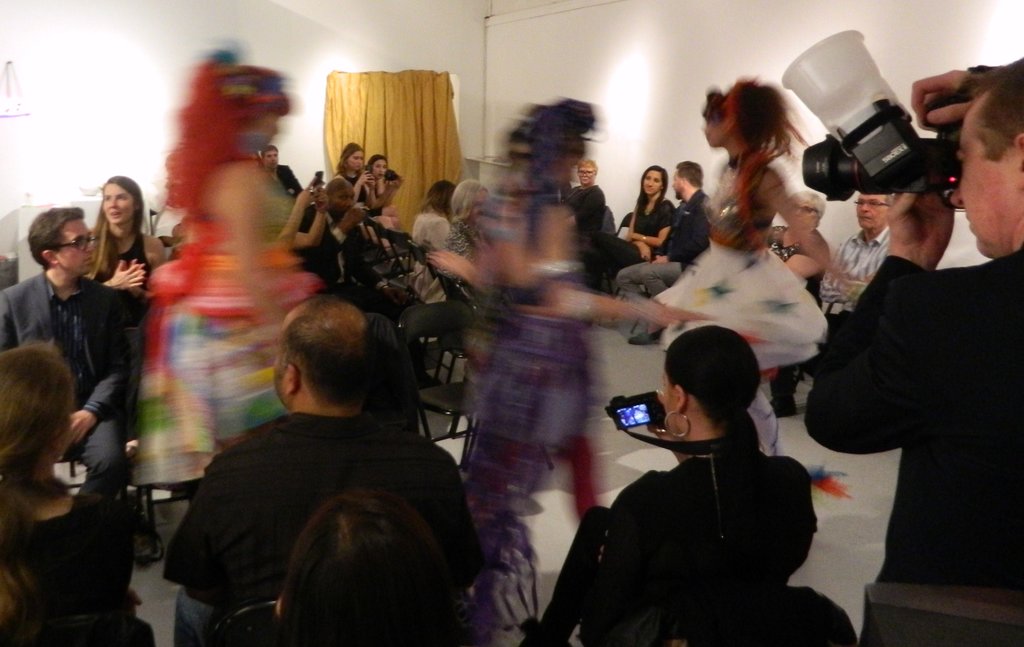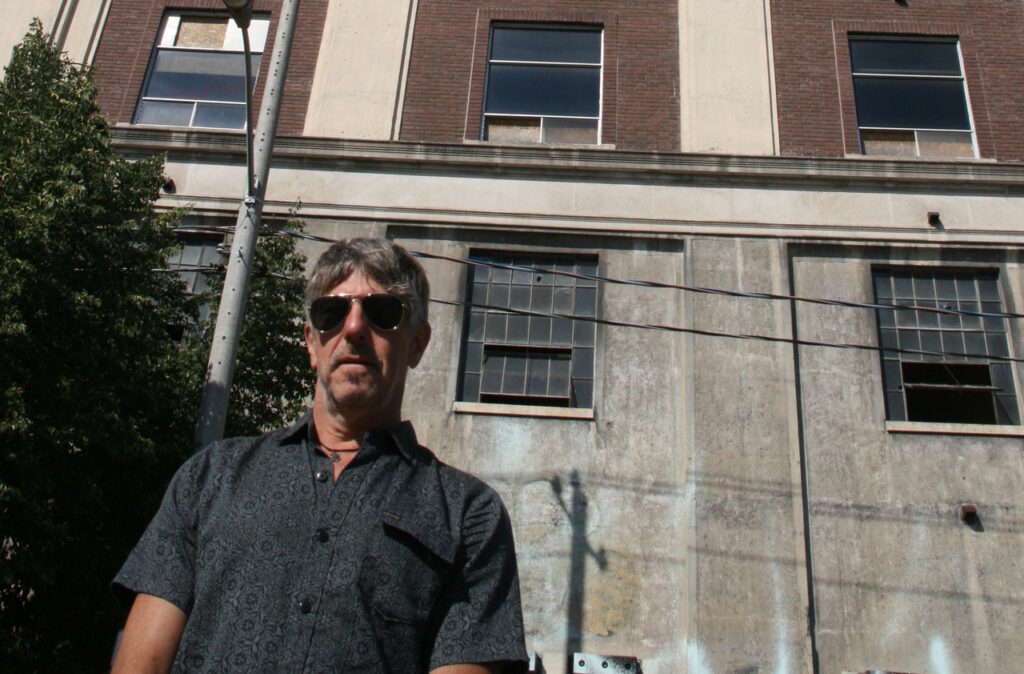Richard Mongiat (left) and David Sylvestre (right) at Revenue on October 22nd. Courtesy of Collective City
Interview about Collective City with Richard Mongiat (RM) and David Sylvestre (DS) by Phil Anderson (PA)
PA: What were the early beginnings of this project?
RM: The idea for the project started about 10 years ago from a conversation that I had with Rae Johnson at an opening at Loop gallery. Rae was one of 3 curators who was responsible for a show at MOCA at the time called This Is Paradise. It was a show that was looking at the Toronto art scene in the late 1970’s and in particular the artist collective Chromazone which changed and re-energized the scene at that time. I was griping to Rae about how bad Toronto (and it’s institutions) are at recording Toronto’s own art history and it was an amazing thing that she (her fellow curators and David Liss at MOCA) had done. Rae basically threw the gauntlet down and said that my generation were responsible for the explosion of artist collectives in the late 1980’s/1990’s and that since no one was recording it, what was I waiting for.
Rae Johnson at OCADU
I approached my friend Dave Sylvestre (who was a founding member of Red Head gallery and formed From*A*Pit with Krys Verrall and myself) if he was interested, even though we had no film making experience. Hell, everything is digital now, how hard can it be? My friend Jeff Winch who teaches film making at Humber College shot all of the initial interviews and we found our first editor Vanessa Jung through a contact at the National Film Board – and Bob’s uncle!
PA: Why did you think it important to document and archive this history of collectives in Toronto?
RM: Because no one else is really doing it – and there really was around 100 artist collectives operating in Toronto during that time period. Well, some academics are but they’re very selective about who and what they’ll record that’s generally based on their academic criteria. We want the artists to tell their own stories.
DS: Richard and I were attracted to the DIY ethos of these collectives. There just weren’t enough opportunities to show your work – so these groups banded together and made their own opportunities. That spirit made these stories inspiring and hopefully, entertaining too.
THIRD RAIL at Liberty Village. Photo: Phil Anderson
PA: How did you go about researching art collectives in Toronto?
RM: At first Dave and I went through a list of all of the collectives that we knew about from that time when we were active in the collective movement. Then it was word of mouth and other artists starting sending us info on other collectives we’d never heard about or come across – there were so many scenes that it was impossible to know of every collective happening during those years! Now we’ve been able to hire artist Nicole Clouston who is our Research & Development person. She’s been scouting out and meeting with a lot of the present day collectives out there and helping us with donating the films to all of the art schools and institutions.
DS: I think Nicole has to do the same amount of exploration and digging as we did in the early days but getting “buy in” from the artists and institutions comes quicker because we have 15 films to refer to.
PA: Were there any surprises in what you found out about collectives in Toronto?
RM: The first surprise we got was from our initial marathon interview/filming session. We interviewed 24 collectives (and 1 curator) over the course of two weekends. Every single collective, despite the genre of art they were working in felt left out and ignored by the existing Toronto art establishments. The painters, the installation artists, the sculptors, the conceptual artists all felt that the other group was getting all of the attention! Really, it was just a group of people all around the same age who felt left out by the commercial galleries, museums and artist run spaces. It really was a generational thing (like it always kind of is).
DS: Richard and I were also surprised by some other recurring themes. It was clear after the first 10 or so interviews that the curatorial aspect of what these collectives were doing was super important. It went well beyond what we think of as a group show. There was a collective aesthetic and a viewpoint about the ideas or the craft they were pursuing. And again, that makes for a good story!
Posters for Symbiosis, Collective exhibit, 1993 (left) and The Purple Institute (right). Courtesy of Phil Anderson
Purple Institute, John Dickson, 1998. Courtesy of Collective City
PA: How has the idea of the art collective evolved over the years ?
RM: It has and it hasn’t. Much of the reasons for forming a collective or starting a collective gallery are pretty much the same. Artists who don’t want the constraints of having to make saleable work for a gallery, artists with shared interests in specific types of art, lack of showing opportunities and a glut of artists, artists working for social change. These haven’t changed over the years. I think technology has been the biggest change. How they connect, how they get the word out, how they even make their work. And of course their access to the whole wide world…
DS: Yes, technology and the speed of communication and the reach it provides has been a real game changer, as they say. But on the other hand, society takes technology for granted and it doesn’t impress people much. So some of the most interesting present-day collectives have a heightened emphasis on community and a sense of personal connection to a communal experience. Perhaps as a reaction to the over saturation of technology (social media particularly). And the pandemic made that yearning for real time connection and experience even stronger.
Off The Wall, an annual event at Propeller Gallery, January 17, 2015. Photo: Brinae Bain
PA: Are there art collective models out there today and are they different from the ones in the past?
RM: It’s still a bit all over the map. There’s still brick and mortar collective galleries (The Plumb for example) as well as groups that still specialize in site specific installation exhibitions. There are collectives like Art Spin that combine cycling to a series of installations at different locations and have broadened the model by adding contemporary dance to the mix. There’s a collective in Scarborough we’re filming called Wave Art Collective who have nothing to do with the downtown Toronto art scene. They’re interested solely in identity and the immigrant experience in Scarborough. We’re making a film about a phenomena we’ve coined Domestic galleries. Artists who have opened up their living spaces (indoor and out) and made them into galleries.
The Plumb, Installation view of Baskets Blighted, 2021. Courtesy of The Plumb
DS: And the city has changed of course. All the “unused” warehouse spaces that existed 25 years ago have long been turned into condos. It’s very expensive to have a studio let alone rent a space that can be converted to present art works. But artists are ingenious and resourceful. And domestic galleries and public art experiences show that.
PA: Do you think new art collectives might be inspired by looking at the past?
RM: I’m not sure. I only hope that they’ll recognize there’s a history of this and maybe take hints of how past generations approached the idea of art collectives and put their own spin on it. I mean, it will always be different to a degree because Toronto is a different place than it was 20 – 30 years ago. It’s certainly more expensive and harder to get space in. So the challenges present day artist collectives will face will certainly affect how artist collectives operate and exhibit.
Fashion show, 2017, an annual event at Gallery 1313. Photo: Simon Termine
PA: Was there a difficult transition from working as a visual artist to becoming a film maker creating a film archive of Toronto art history?
RM: At first Dave and I relied on our editor Vanessa Jung to help shape the films as we really had no film making experience at all. I think being visual artists helped and we were certainly schooled in watching films so we had ideas. From those initial 24 interviews we felt that what we did know well was the story. We worked hard at crafting the stories from the interviews. I think that now, after 15 short films, we’ve become pretty good producers and directors and we’re working with some great editors. I personally just see it as an extension of what I do and have always done as an artist.
DS: Like Richard said, I feel that we’re experts on the story and what is unique about each collective. So we play a bigger role in identifying themes we want to get across in the edit. After that we get to collaborate, or sit back and watch how these incredibly talented editors like Vanessa or Marcel Canzona bring that story to life. And each of the films has an original music score and sound design done by Nicholas Stirling – who is wonderfully versatile. We’re constantly amazed at the different musical styles he has a command of.
PA: What has the response to your work been from the art community?
RM: From the artists in the community, I think really well. We’re now also making films of present day collectives and we have an artist collective’s database on our website (www.collectivecity.ca) that allows collectives to post pics, info and links to their projects. So I think that younger generations of Toronto’s art scene are starting to appreciate the work we’re trying to do. As for the academics and institutions, they know we’re here, they know what we’re doing but no one’s really reached out to us (David Liss and Ann MacDonald from the Doris MCCarthy Gallery at U of T Scarborough have been great). We have given a few talks at various art schools but there’s lot’s of room still open on our dance cards! We’d love to work with anyone who will help support the idea of artist collectives in Toronto.
David Liss, Director Emeritus of MOCA, 2015. Photo: Phil Anderson
DS: The art community has been incredibly supportive. And now that we’re doing present day collectives we think it would be incredibly cool to facilitate, in some small way, a connection between later career artists and the people in their 20’s and 30’s.
PA: What’s next? Plug your screening …etc at the Revue.
RM: The screening of the 3 new films (Name 10 Parts of the Body, The Outlaw Neon and Art Spin) at the Revue on October 22nd, 1 to 3 pm. We’re working on two new films as we speak and constantly growing the artist collective database. Now that we’ve have reliable funding coming in we’re a bit like a well oiled machine, we’ll continue making films, have free showings and donate them to whomever can use them. There is an endless list of past and present day collective to record!
DS: Yes, never a dull moment! Ha ha.

